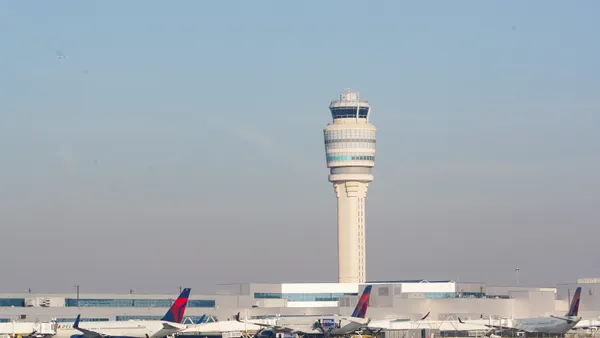Dive Brief:
- The Trump administration could have too much on its plate this year and might not have time to act on its much-touted, $1 trillion infrastructure plan until 2018, according to Axios.
- President Donald Trump's staffers and agency heads are currently engaged with issues of immigration, healthcare, tax reform and battles over the debt ceiling.
- Delaying infrastructure until next year could also be part of a Republican strategy to reel in Democrats facing midterm re-election who might be hesitant to push back against projects that could benefit their constituents.
Dive Insight:
As word spread about the potential delay, construction-related stocks that received an initial post-election boost on the hopes of increased infrastructure spending have taken a hit. Share prices for U.S. Steel (-7.85%), Martin Marietta (-4.7%), Vulcan Materials (-3.15%) and Caterpillar (-2.7%) all fell on the news, according to Investor's Business Daily.
The construction industry has been optimistic about the new administration, due largely to his infrastructure spending promises. However, this potential delay in Trump's plan echoes former frustrations for contractors hoping for a greater sense of stability in the project pipeline.
Postponing the infrastructure program could also give Trump and his team additional time to refine their $137 billion list of high-priority projects, which they reportedly circulated to the nation's governors last month, as well as to further develop a financing strategy. Trump's original infrastructure proposal called for private investment — rewarded with an 82% tax credit — to play a major role, but Democrats have made it clear that any infrastructure plan they support must include direct federal spending.
Last month, Senate Democrats proposed their own 10-year, $1 trillion plan, which focuses on bridge and road repair and the creation of a $200 billion "vital infrastructure fund." The Republicans, however, have continued to campaign against increasing debt and have said they will oppose a stimulus-like spending plan. In January, House Speaker Paul Ryan, R-WI, indicated the administration was still on track to execute an equity investor-heavy plan with a ratio of $40 of private money to every $1 of federal funds.
Other infrastructure proposals have merged, like one from the new Coalition to Modernize American Infrastructure, which launched earlier this month. The group, led by the Bipartisan Policy Council, said the country needs a $3.3 trillion investment in infrastructure and suggested a mix of both public and private financing.











